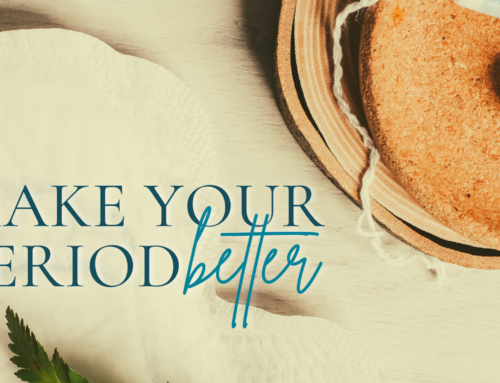 I was raised on a healthy diet of coca-cola, lays potato chips, and hamburger helper. Eating clean, and having an awareness about products that I use and ingest, wasn’t something that I was brought up worrying about, or even considering. When I made the switch to a more sustainable lifestyle, even though I lived in the crunchy Pacific Northwest, it was met with a fair share of cynicism. I don’t know how many times I heard a variation of the comment, “Well, when I was a kid, we ate lead paint and turned out just fine.” Insert my not so discreet eye-roll here.
I was raised on a healthy diet of coca-cola, lays potato chips, and hamburger helper. Eating clean, and having an awareness about products that I use and ingest, wasn’t something that I was brought up worrying about, or even considering. When I made the switch to a more sustainable lifestyle, even though I lived in the crunchy Pacific Northwest, it was met with a fair share of cynicism. I don’t know how many times I heard a variation of the comment, “Well, when I was a kid, we ate lead paint and turned out just fine.” Insert my not so discreet eye-roll here.
Sustainability and healthy living start at home. Now, let me clarify before my sweet mom reads this and has a coronary. My parents had six kids. We ate our rice-a-roni with vegetables grown from our garden, thank you very much. We sat down at the table, device free, every night and had dinner together as a family; went on bike rides; played outside in the yard; camped; and were generally active. That being said, my parents raised kids in the 80’s and 90’s during the reign of pre-packaged food and when penicillin was used to treat every sniffle. I was grown and on my own before there was mainstream awareness of the overuse of antibiotics and hormones and before going organic became trendy.
So, where do you start when you become more conscious about what you’re putting into your body? The first step for me actually predated any diet modification and was a reaction to side effects of half a decade of hormonal birth control use. I received my original birth control prescription in a dark and dingy room at Planned Parenthood in Kent, Washington. I went there at the recommendation of my best friend since I could walk in unscheduled and after a ten minute consultation with a provider that didn’t know my medical history and leave with six months worth of pills in a brown paper bag and no follow up appointment (I wish I was joking here).
When I was in college I sought this prescription because I had debilitating cyclical pain to the point where I remember crawling to my car from my upstairs bedroom to make it to the University of Washington for my midterm. I consider the pain that I experienced on a monthly basis to be worse than natural childbirth, as even that did not bring me to my knees. Not pleased with the lack of information and impersonal experience that I had at Planned Parenthood I went through my primary provider for follow up care.
Messing with my chemistry through the use of hormones brought along a whole host of issues. Eventually I ended up switching prescriptions due to experiencing frequent chest pain, fluctuating weight, and a generally depressed mood. I decided that the benefit of masking pain with a pill was not worth the havoc it was wreaking on my normal body function. I stopped using hormones six months before I got married and haven’t looked back.
In 2012 the Guttmacher Institute estimated that approximately 9.7 million women in the USA were using the pill, and with Earth Day coming up I’d be remiss not to take this opportunity to mention that the use of hormones also has an impact on the environment. As the saying goes, what goes in must come out and wastewater with concentrations of even trace ethinyl-estradiol (EE2) found in most birth control pills is attributed to the feminization of fish and disruption of ecosystems.
Having more knowledge means that you have the power to be an informed consumer. My path to a more wholistic life approach continued after I got married and my husband and I were getting serious about trying to conceive a baby. I was fortunate to have a partner that understood he played a major part in the conception scenario and that a hearty diet of landjäger and dunkelweizen wasn’t going to cut the mustard. We transitioned to purchasing USDA certified organic produce, dairy and meat. While one could say that it is coincidental that we were able to conceive two months after modifying our eating habits after trying unsuccessfully for several months prior, going organic certainly didn’t hurt anything.
When we jumped off the artificial hormone and processed food ship we became aware of greenwashing. Most folks recognize greenwashing happens when a product is marketed to the consumer as environmentally conscious or sustainable when it actually is not. Things to look out for are products that are marketed with unregulated phrases such as, “green,” “all natural,” or as California residents eating at their favorite brunch spot Sweet Dixie Kitchen learned recently, “locally sourced” might mean bought at the Popeye’s Chicken down the street.
Ironically even birth control is marketed as a green product—many articles proliferate that the negative impact of adding another human life to the earth outweighs the toxic impacts of hormones entering the water supply. Hence taking the birth control pill and not creating human life helps to preserve natural resources and protect the environment. Betsy Hartmann takes an interesting look at this in her DifferenTakes Issue Paper series stating, “By stressing the negative role of population growth” poor women’s fertility becomes a target “as a fundamental root of environmental evil.” Dwindling natural resources due to over population is a legitimate concern, but perhaps the focus should be on restoration and being considerate consumers rather than vilifying those that chose to procreate.
Greenwashing is made possible when marketers take advantage of under-informed consumers. Having an awareness of greenwashing can save you from paying a premium for products that really have no added benefit and are not sustainable. Additionally, in the case of birth control, an awareness of greenwashing may assist you to resist systemic oppression of a woman’s natural fertility that is socially accepted.
Rather than reaching for body altering hormones, in the kitchen and the bedroom, I would challenge each woman to instead learn about her physiology. Finding products and methods that are truly sustainable can be as simple as understanding and leveraging your unique biology.





Leave A Comment